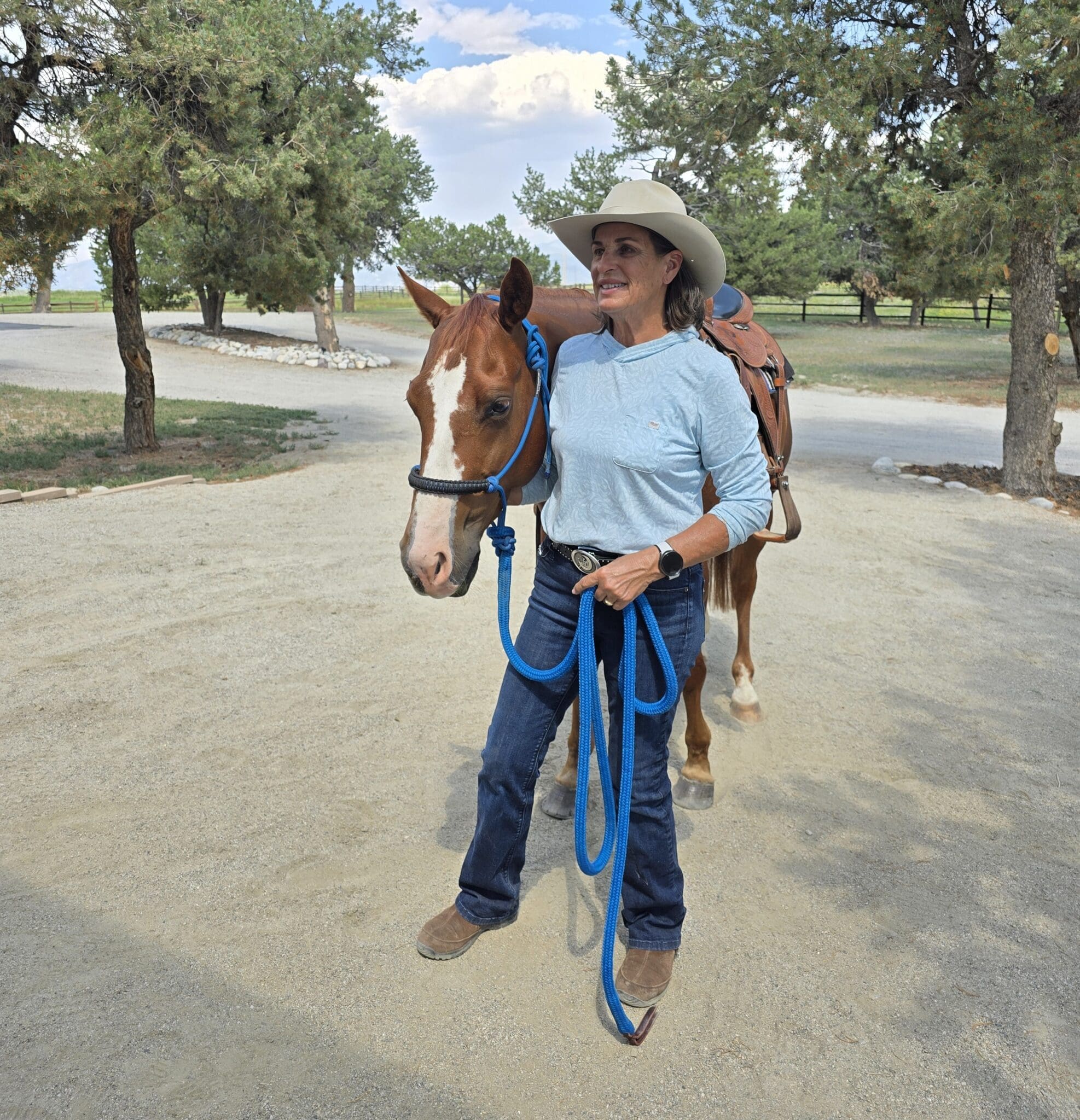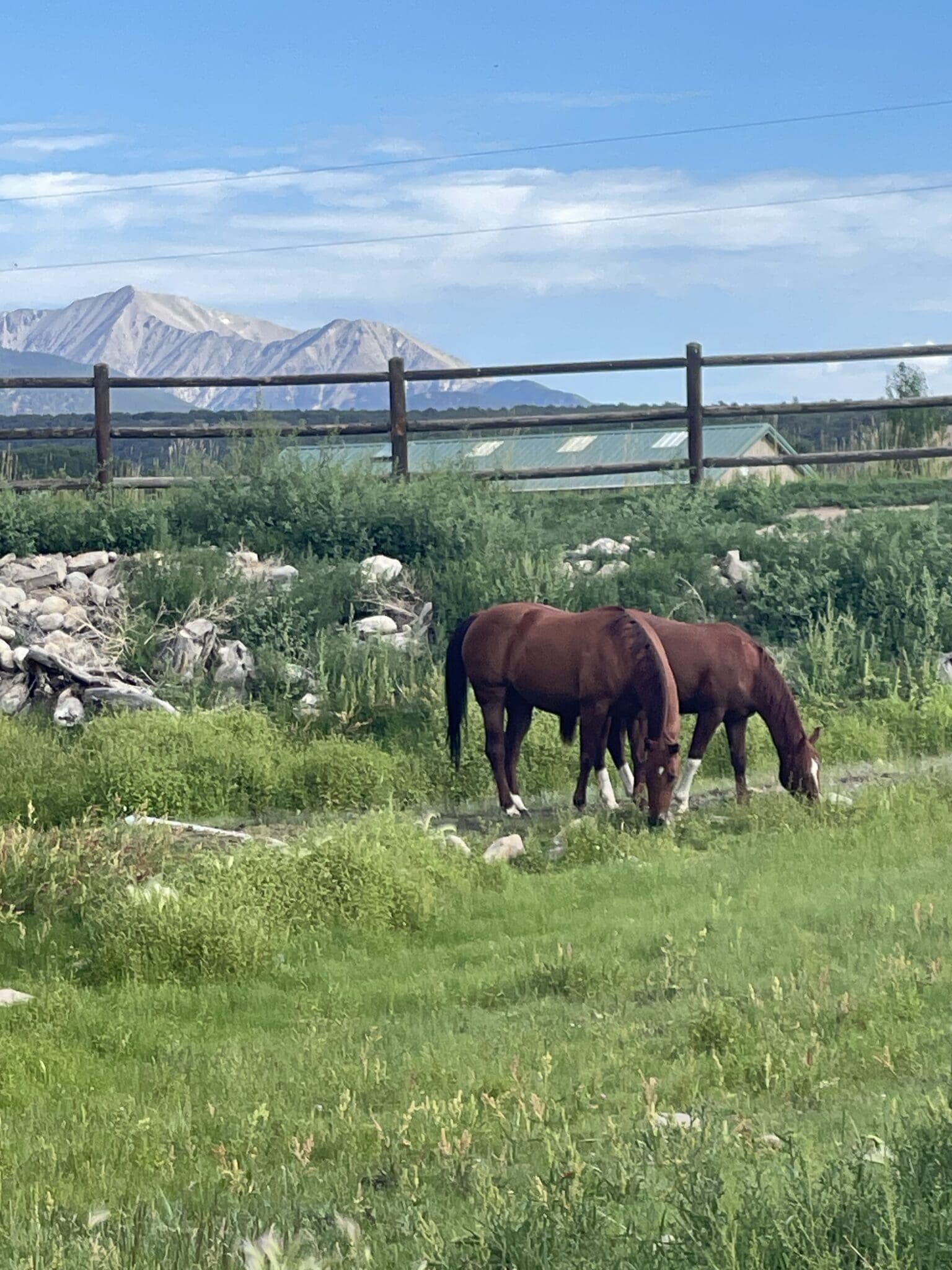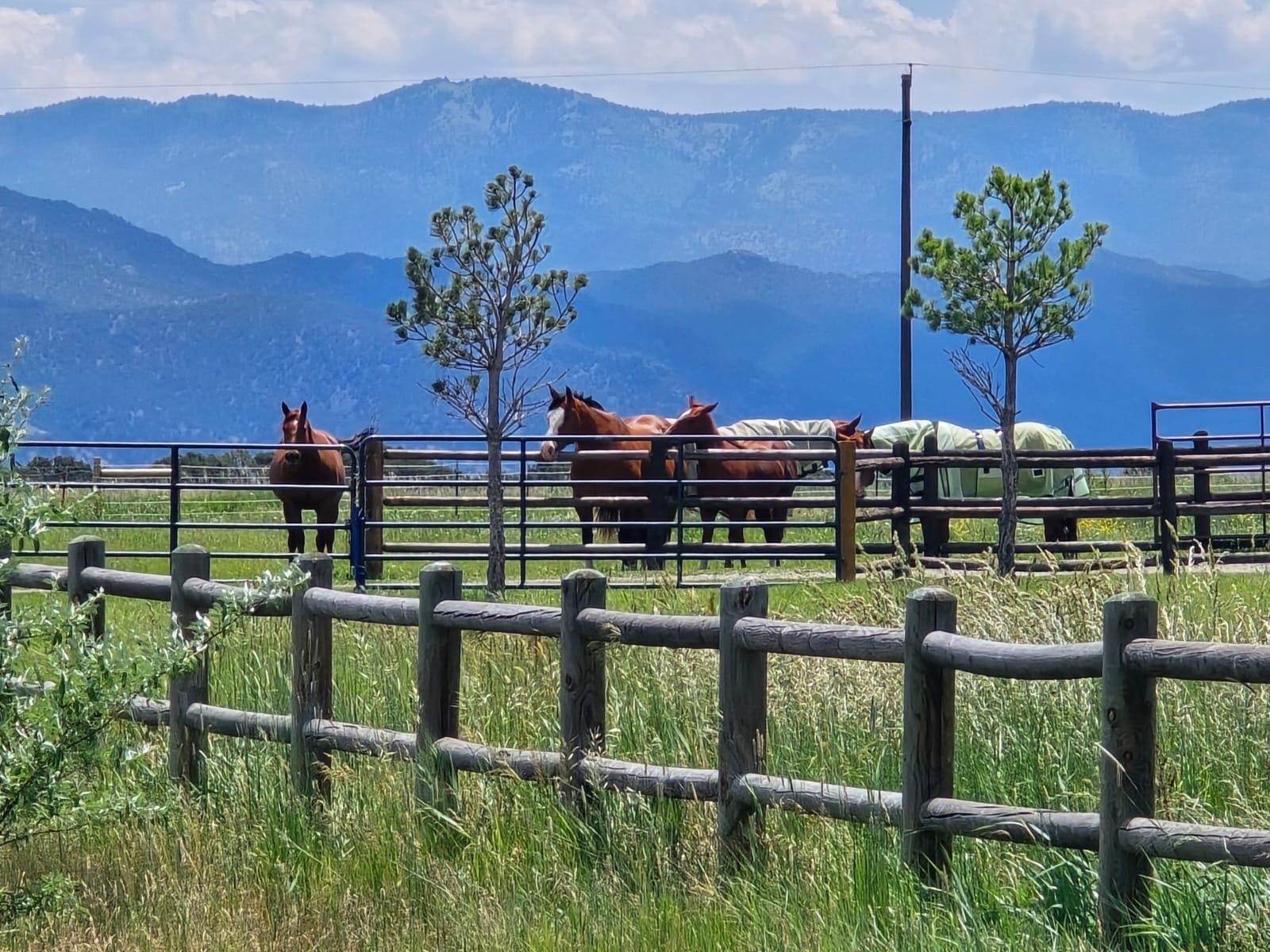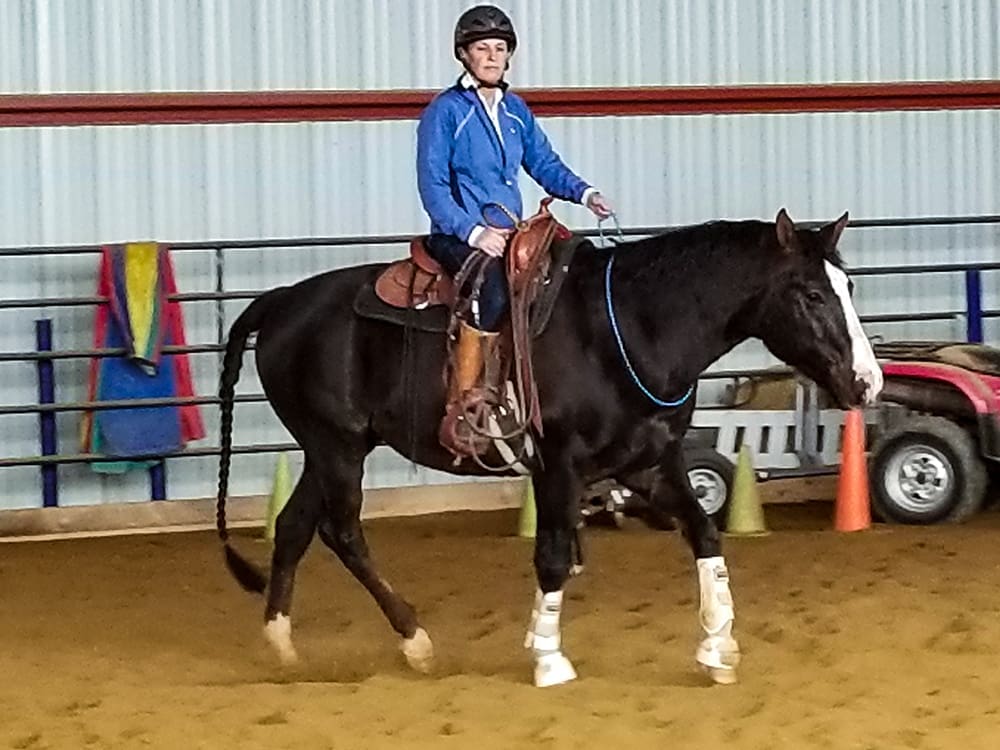While shooting a Horse Master episode on Martha’s Vineyard in Massachusetts I was introduced to a woman, Vickie Thurber, who had an accident with her young pinto eventing horse and wanted help introducing “Poco” to new possibly scary stimuli. She wanted to make sure he—and she—knew what to do if he spooked again. In their initial accident, Poco spooked and Vickie injured her arm. I decided to take Poco to the beach to introduce him to the surf. Though he lives on an island, the surf was new to him. Although not everyone can ride their horse on the beach, the technique I use to help Poco face his fears can be used to approach any scary object or scene. Read on to learn more about “advance and retreat”. Plus, watch a clip online now: http://horsemaster.juliegoodnight.com/episodes.html
Advance and retreat: These days, with military actions and wars consistently in the headlines, thoughts of aggression make it easy to think of “advance and retreat” as an aggressive move. But in case of horse training, advance and retreat is an important concept to understand and when utilized properly, this technique can effectively train your horse to quietly and peacefully accept all sorts of scary and uncomfortable stimuli.
When training a horse to accept a scary or adverse stimulus, whether it be clippers, fly spray, the water hose, the bridle, or taking a horse to the beach for the first time, it’s important to understand the theory of advance and retreat. First, you must understand that whatever a horse is afraid of, be it a sound, a feel or a touch, that factor is considered a stimulus. A stimulus is an environmental factor that motivates the horse to action. If the horse is afraid of the stimulus, the action will likely be to snort and run away.
The advance and retreat method of horse training is a way to desensitize the horse to a scary stimulus and teach him to respond to the stimulus with willing acceptance. Let’s say, for the sake of explanation that the scary stimulus is fly spray, although this method will work with any type of stimulus. The first step, in any training process, is to determine what the desired outcome is. In the instance of fly spray, the desired outcome is that the horse stands still and relaxed while you spray him.
With the case of fly spray, as with just about any scary stimulus, there are many different sensations that may frighten the horse. It maybe the sound of the spray bottle, the smell of the chemical or the feel of the droplets on his body (or all of the stimuli combined) that causes fear in the horse. Regardless of what actually causes the fear, it’s an honest emotion of the horse and he should not be reprimanded.
The theory of the advance is that you approach slowly with the stimulus, starting far enough away that the horse is not uncomfortable and advancing slowly until you reach the place that causes discomfort or a slight tensing in the horse. It may be that just spraying in close proximity to the horse causes him to tense and become frightened (helpful hint: use a bottle with water in it so you don’t waste your fly spray). Only advance as far as you can until the horse becomes tense, advance no farther but maintain your ground.
Continue applying the stimulus, at the distance that caused the horse discomfort and let him move as fast as he wants in a circle around you. Do not try to hold him still, don’t impede his forward motion; keep his nose tipped toward you so that he has to move in a circle around you. It’s important that he is allowed to move his feet because that is his natural reaction to a scary stimulus.
The theory of retreat comes into play once the horse voluntarily makes the right response, which is to hold still and/or relax. As soon as the horse stops his feet or relaxes, even if it’s very briefly, immediately remove the stimulus (stop spraying). Turn your back on the horse and take a few steps away and allow him time to relax and take a deep breath. Removing the stimulus when the horse makes the right response rewards him for stopping his feet. Timing is everything, as with most aspects of horse training.
Apply the stimulus again (advance), as close as causes discomfort and remove it the instant the horse stops moving his feet or relaxes (retreat). In very short order, the horse will make the association that if he holds still and relaxes, the scary thing will go away. Once he makes this association, it will diffuse his fear altogether.
It’s critical in this training technique that you not advance beyond whatever causes discomfort to the horse. Once he stands still and accepts the stimulus (because you have retreated a number of times), then you can advance farther. I have seen too many horses traumatized by people advancing too far initially and overwhelming the horse, sending him into terror and panic. Then often, the person removes the stimulus when the horse is reacting poorly, thus rewarding his behavior.
Advance and retreat, when applied with good timing and a calm and humane approach, will help the horse learn to stand still and accept scary stimuli. Furthermore, once a horse has been desensitized in this way to a number of stimuli, he learns to carry over this response to new stimuli as well and to think his way through a scary scene.
–Julie Goodnight



